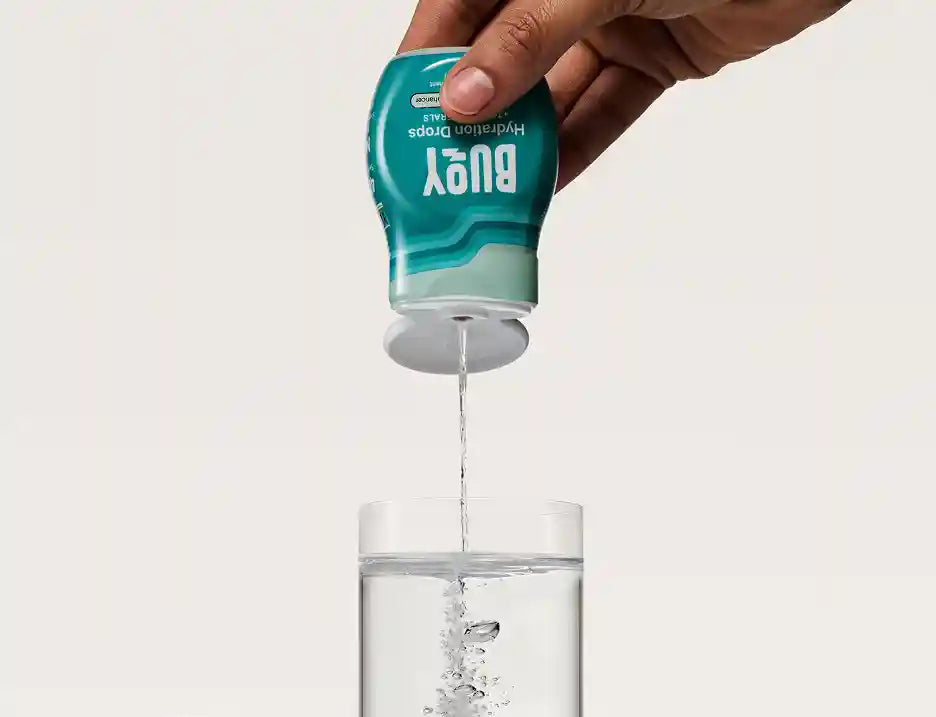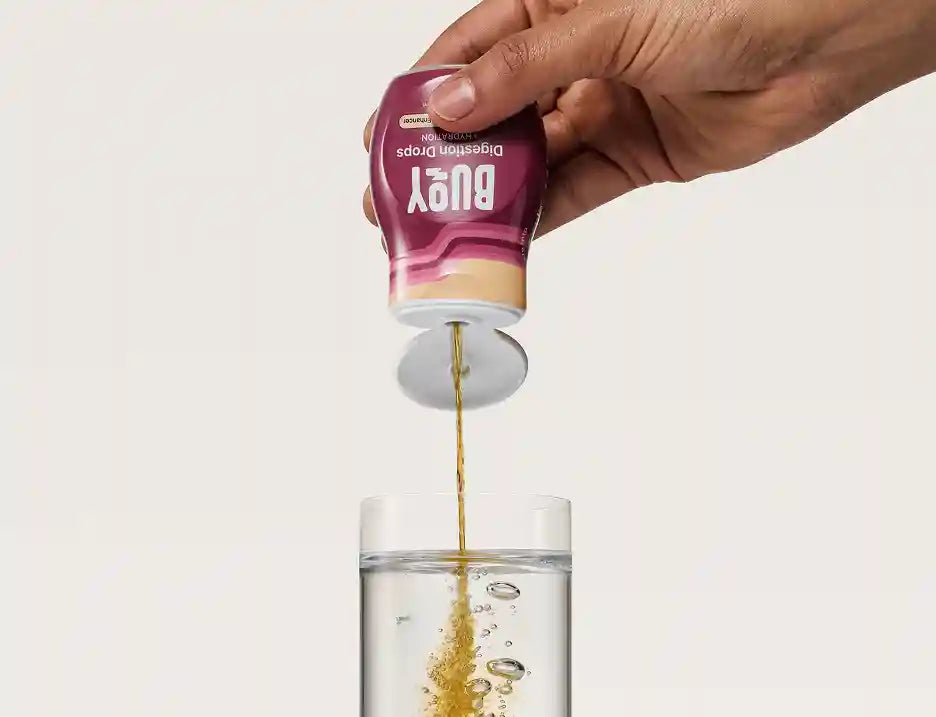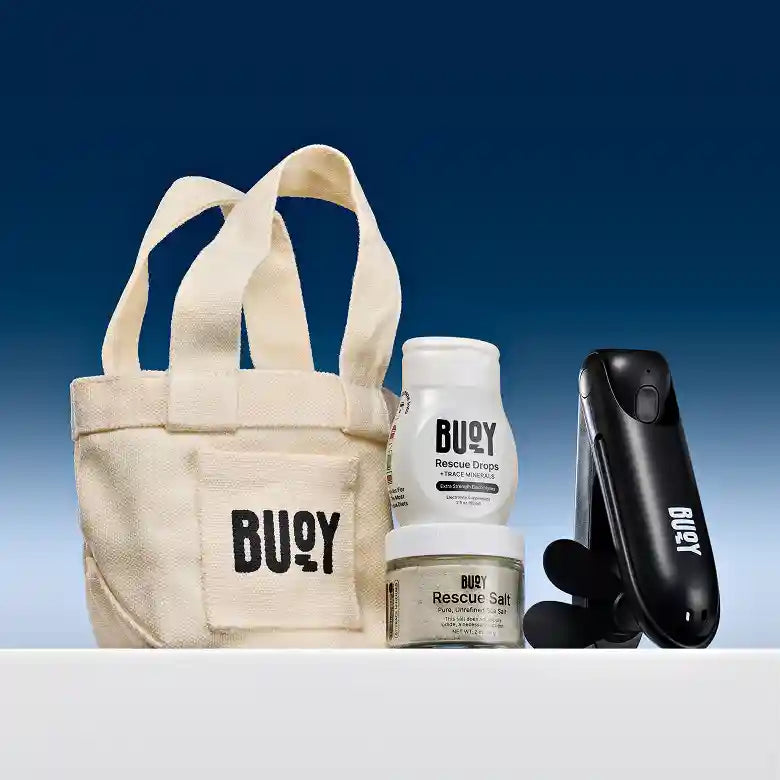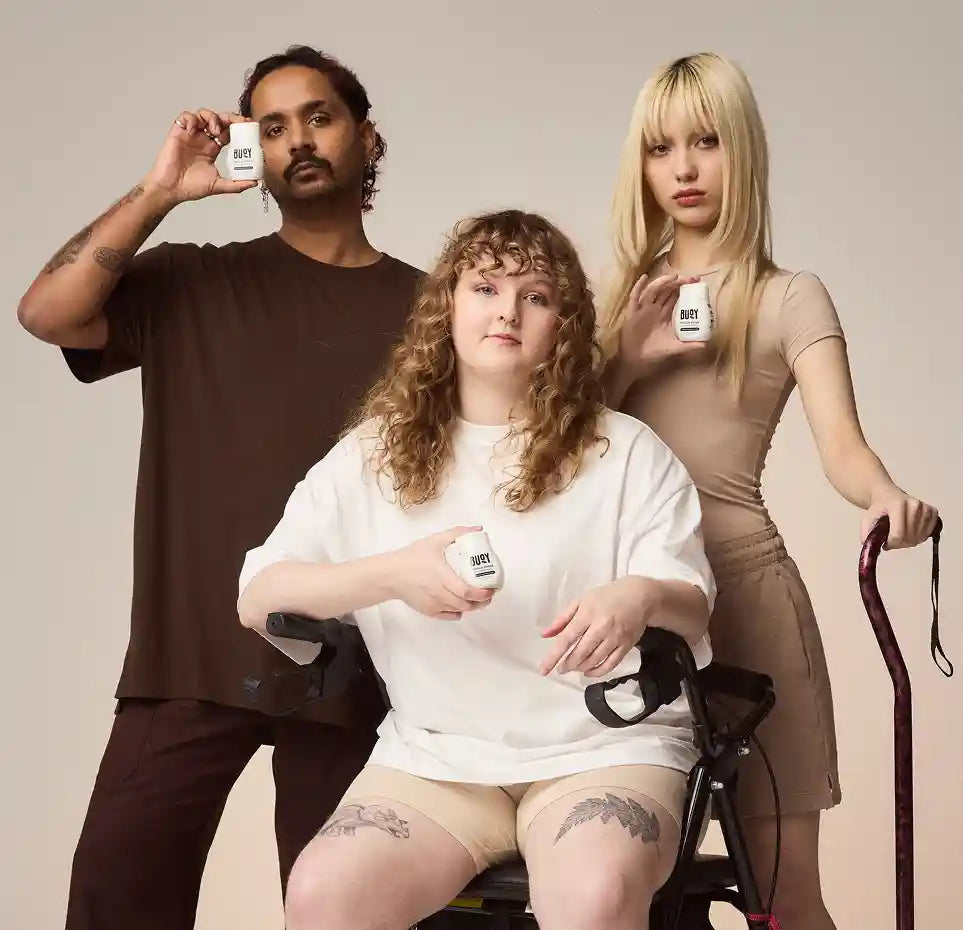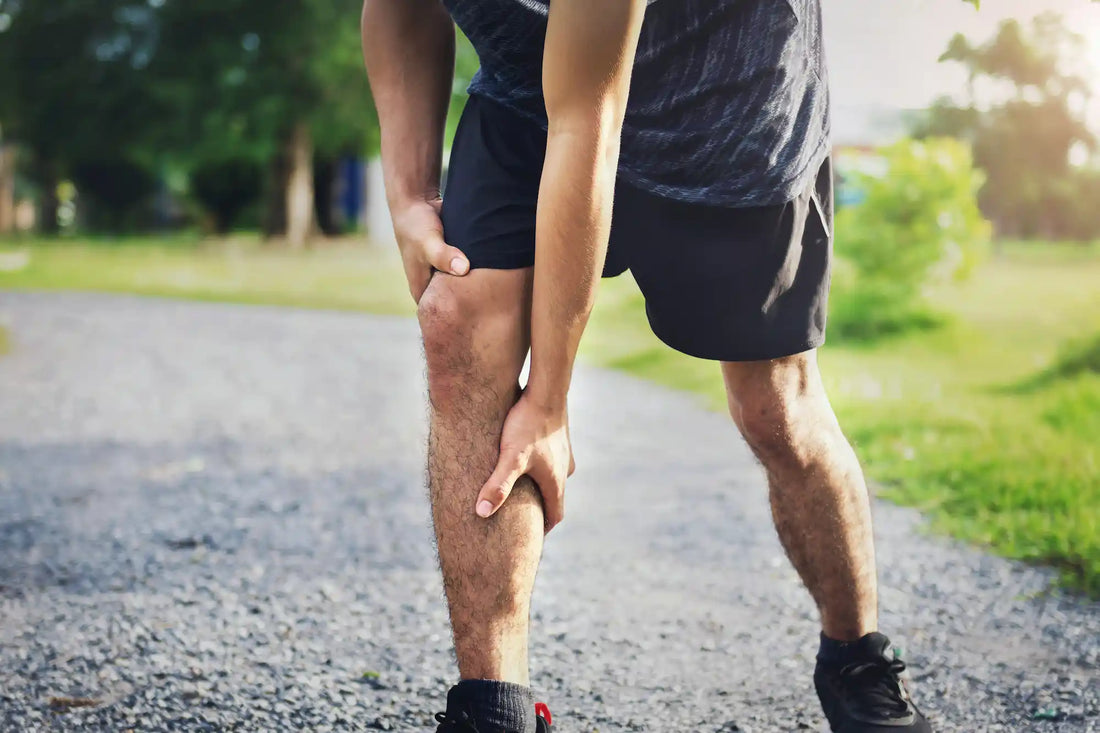
How to Treat Muscle Cramps from Dehydration
Ever been stopped in your tracks by a sudden muscle cramp?
Ever had a muscle cramp strike out of nowhere, catching you off guard? These painful contractions can disrupt your day, whether you're at your desk, out for a run, or winding down at night. One of the biggest culprits? Dehydration. Without the right balance of fluids and electrolytes, your muscles become more prone to spasms, leading to unexpected and uncomfortable cramps.
Essential Takeaways
- Dehydration and low electrolyte levels are two of the biggest culprits behind muscle cramps. Proper hydration involves more than just drinking water, it’s about replenishing lost minerals that support muscle function.
- Electrolytes like sodium, potassium, and magnesium help muscles contract and relax properly. Without them, cramps can become frequent and painful
- The Daily Wellness Bundle with Buoy Hydration Drops, Energy Drops, and Immunity Drops makes it easy to maintain proper hydration and electrolyte levels.
So if you’re tired of these frustrating interruptions, you’re in the right place. This guide breaks down the link between dehydration and muscle cramps, plus practical steps to relieve and prevent them
- Understanding Dehydration-Induced Muscle Cramps
- Immediate Relief Techniques for Muscle Cramps
- Rehydration: The First Line of Defense
- Consuming Electrolyte-Rich Foods and Drinks
- Epsom Salt Baths: Relaxation and Replenishment
- Prevention Strategies for Future Muscle Cramps
- Hydration During Exercise: What You Need to Know
- Monitoring Electrolyte Intake
- When to Seek Medical Attention for Muscle Cramps
- Your First Step to a Cramp-Free Life
Understanding Dehydration-Induced Muscle Cramps
Dehydration-induced muscle cramps are more common than you’d expect and aren’t just limited to athletes. Anyone, whether they work out regularly, sit for extended periods, or simply don’t drink enough fluids, can experience these involuntary contractions. Understanding what triggers them is the first step in preventing them.
What Causes Dehydration-Related Muscle Cramps?
Your body relies on a delicate balance of fluids and electrolytes to function properly. When you sweat, sit in hot environments, or don’t drink enough fluids, your muscles lose the minerals they need to contract and relax smoothly, leading to painful spasms.
Studies show that replenishing lost water alone isn’t enough. Drinking water without electrolytes can make muscles more prone to cramping, whereas restoring sodium, potassium, and magnesium levels can prevent it (3).
Who’s at Risk?
- Athletes who sweat excessively during workouts
- People who sit for long periods with limited movement
- Older adults who naturally retain less water
- Anyone spending long hours in hot environments
Recognizing the connection between dehydration and cramps is the first step in managing and preventing them.

Immediate Relief Techniques for Muscle Cramps
When a muscle cramp hits, you need relief, fast. Here are a few techniques to stop the pain and relax the muscle:
-
Stretching: When a cramp hits, fast relief is key. Try gentle stretching, slowly extend the affected muscle and hold the position for a few seconds.
-
Massaging: Apply steady pressure to the area, starting at the tightest point and working outward to improve circulation.
- Applying Heat or Cold: Use a warm compress to relax tight muscles or a cold pack to reduce inflammation.
These methods offer quick relief, but preventing cramps requires consistent hydration and electrolyte balance. Keep reading to learn how to stop them before they start.
Rehydration: The First Line of Defense
Drinking water alone won’t always stop muscle cramps. Your body also needs electrolytes to regulate nerve function and muscle movement. Without minerals like sodium, potassium, and magnesium, muscles can spasm even if you’re technically hydrated.
If you’re losing fluids due to sweat or heat, your body needs sodium, potassium, and magnesium to maintain proper muscle function. This is where Buoy Hydration Drops come in - just a small squeeze into your drink can quickly restore balance and stop cramps in their tracks.
Consuming Electrolyte-Rich Foods and Drinks
Hydration is about more than just drinking water. Adding electrolyte-rich foods and beverages to your diet can keep your levels in check.
Best Foods for Muscle Cramp Prevention:
- Bananas – High in potassium, they help regulate muscle contractions.
- Coconut Water – A natural source of potassium, magnesium, and sodium.
- Leafy Greens – Packed with magnesium to support nerve function.
- Nuts and Seeds – Contain magnesium and healthy fats for muscle recovery.
For a deeper dive into electrolyte-rich foods, check out Top 10 Foods High in Electrolytes and Why You Need Them.
Pairing these foods with Buoy Hydration Drops gives you an extra boost, ensuring your body gets all the minerals needed to prevent cramps.
Epsom Salt Baths: Relaxation and Replenishment
Soaking in an Epsom salt bath is another great way to relieve and prevent cramps. The magnesium in Epsom salts is absorbed through the skin, helping to relax tight muscles and ease tension. Just dissolve a cup in warm water and soak for 15 to 20 minutes.
Prevention Strategies for Future Muscle Cramps
Stopping muscle cramps before they happen is the best approach. Here are some ways to keep them at bay:
- Stay Hydrated: Drink at least 64 ounces of water daily, adjusting for heat and activity level.
- Replenish Electrolytes: Use Buoy Hydration Drops to maintain proper mineral balance.
- Stretch Regularly: Keeping muscles flexible reduces the risk of cramps.
- Avoid Excess Caffeine and Alcohol: Both can dehydrate the body, increasing the risk of cramps.
By making these habits part of your routine, you’re setting yourself up for a cramp-free life.
Find more ways to treat and prevent muscle cramps in our detailed blog post, Causes and Remedies for Muscle Cramps, which dives deep into the root causes and offers practical solutions for prevention and relief.
Hydration During Exercise: What You Need to Know
Staying hydrated while working out isn’t just about performance, it’s about preventing muscle cramps, too.
Key Strategies for Exercise Hydration:
- Pre-Hydration: Drink fluids before you start exercising to prepare your muscles.
- Frequent Sips: Keep a bottle of water with Buoy Hydration Drops handy and take small sips throughout your workout.
- Post-Workout Recovery: Replenish electrolytes immediately after exercise to aid recovery and prevent post-workout cramps.
Proper hydration supports endurance and muscle recovery, ensuring that your body functions optimally during and after physical activity.

Monitoring Electrolyte Intake
Keeping track of your electrolytes is essential, especially if you’re active or in a hot environment. Three key minerals play a crucial role in preventing cramps:
- Sodium: Regulates fluid balance and prevents dehydration-related cramping.
- Potassium: Helps muscles contract and relax properly.
- Magnesium: Supports nerve function and muscle relaxation.
To simplify electrolyte tracking, use Buoy Hydration Drops for a quick and easy way to stay balanced.
When to Seek Medical Attention for Muscle Cramps
Most muscle cramps are harmless and pass quickly, but if they persist or occur frequently, consult a healthcare professional. Severe cramps can be a sign of an underlying condition requiring medical attention.
Your First Step to a Cramp-Free Life
Understanding the link between dehydration and muscle cramps is the first step toward stopping them for good. By staying hydrated, replenishing electrolytes, and making smart lifestyle choices, you can significantly reduce your risk of painful cramps.
Why Buoy Hydration Drops?
Buoy makes hydration easy. With just a squeeze, you get a blend of essential electrolytes without added sugars or artificial ingredients.
Take Action Today
Don’t let muscle cramps slow you down. Start incorporating proper hydration habits into your routine with Buoy Hydration Drops, your all-in-one solution for a cramp-free life.

